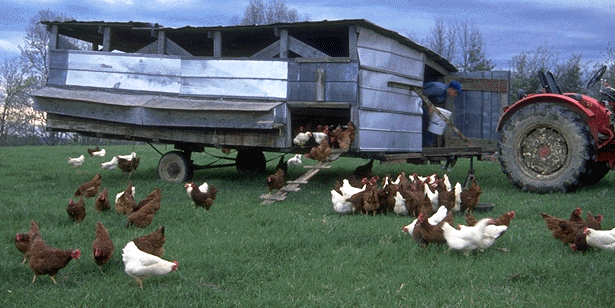Near the end of the chapter, Pollan brings up the topic of what the words "sustainable", "organic", and "natural" really mean. Although supermarket produce and goods may have the label of organic, it has been shipped all around the country in vehicles powered by fossil fuels. So, are these foods really "organic?" Joel Salatin would not call those foods sustainable or organic since he does not even believe in shipping his products. Though the foods may be grown organically (without pesticides, etc.) it takes a considerable amount of energy and resources to constantly stock out stores with the vast selection of food that we as consumers enjoy. Taking this into consideration, can we label any of the foods in our supermarkets as "organic?" Also, are the people who go out of their way to buy these "organic" foods truly taking a stand against the industrialization of food production?
On a side-note, the portable henhouse, or Eggmobile, that Pollan mentions caught my eye so I looked it up on google and this is what I found:


uhhh
ReplyDeletegayyy
ReplyDeleteThis comment has been removed by the author.
ReplyDeleteIs anyone here because they have to read this book for school and find a summary and where to lazy to think of one and now there here? Cause I am in Ms. Cattiue class and in 7 grade jay m. robinson middle school
ReplyDeleteNote changes:
DeleteIs anyone here because they have to read this book for school and find a summary, were too lazy to think of one, and now they're here? I ask because I am in Ms. Carriue's 7th grade class at Jay M. Robinson Middle School.
You only improve by doing the work.
i am
Deletethank you Ms. Carriue's this really improve my work. ,.
ReplyDelete=